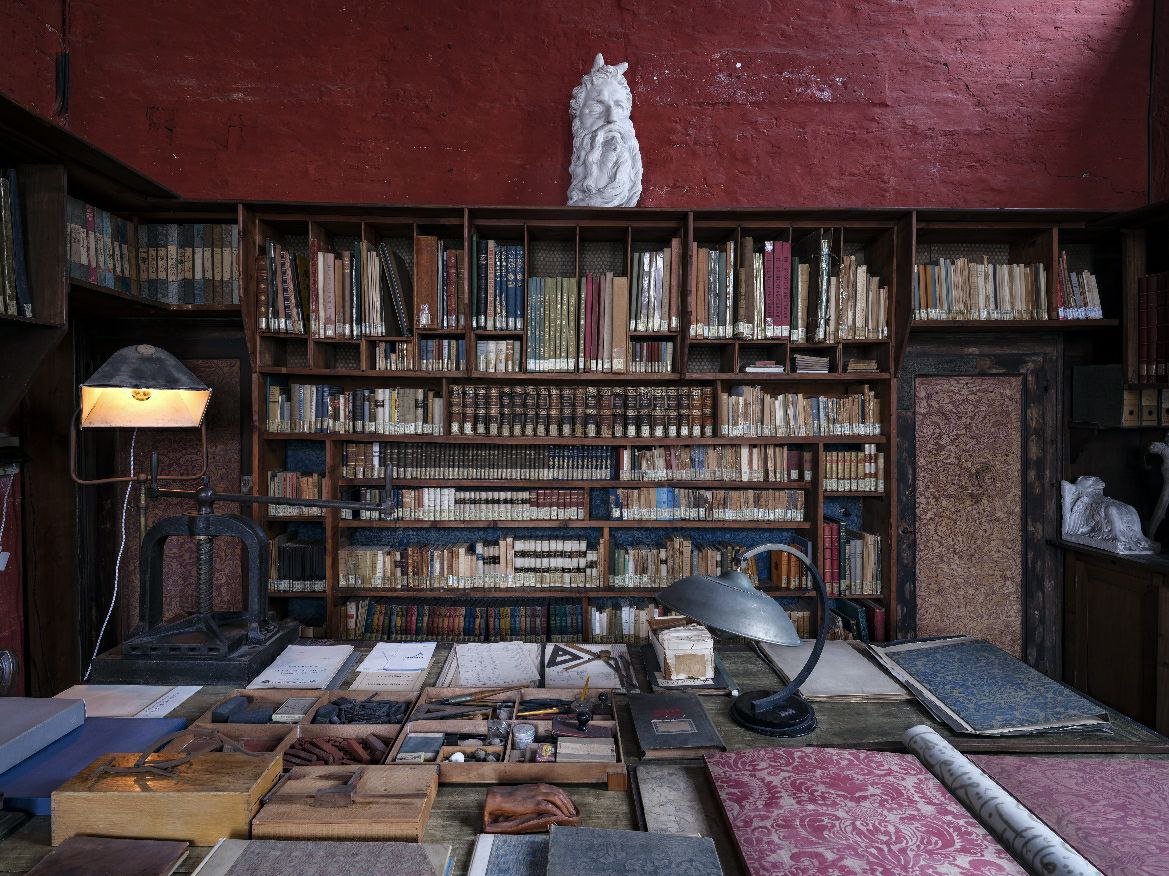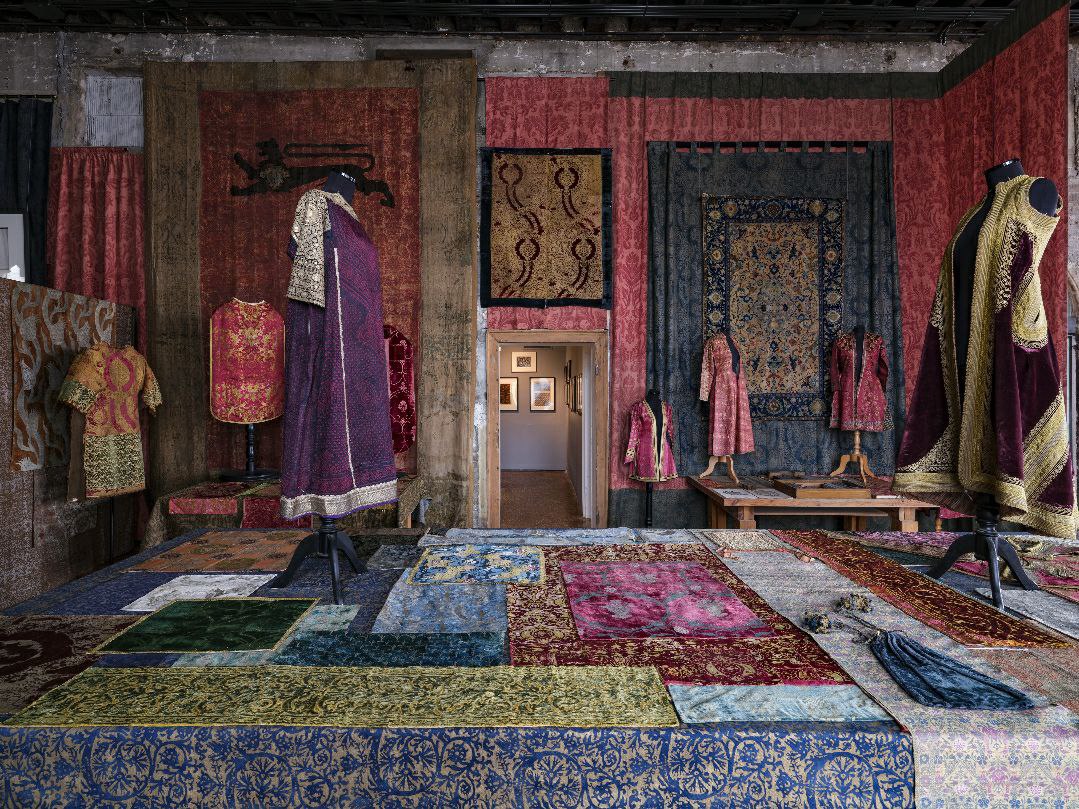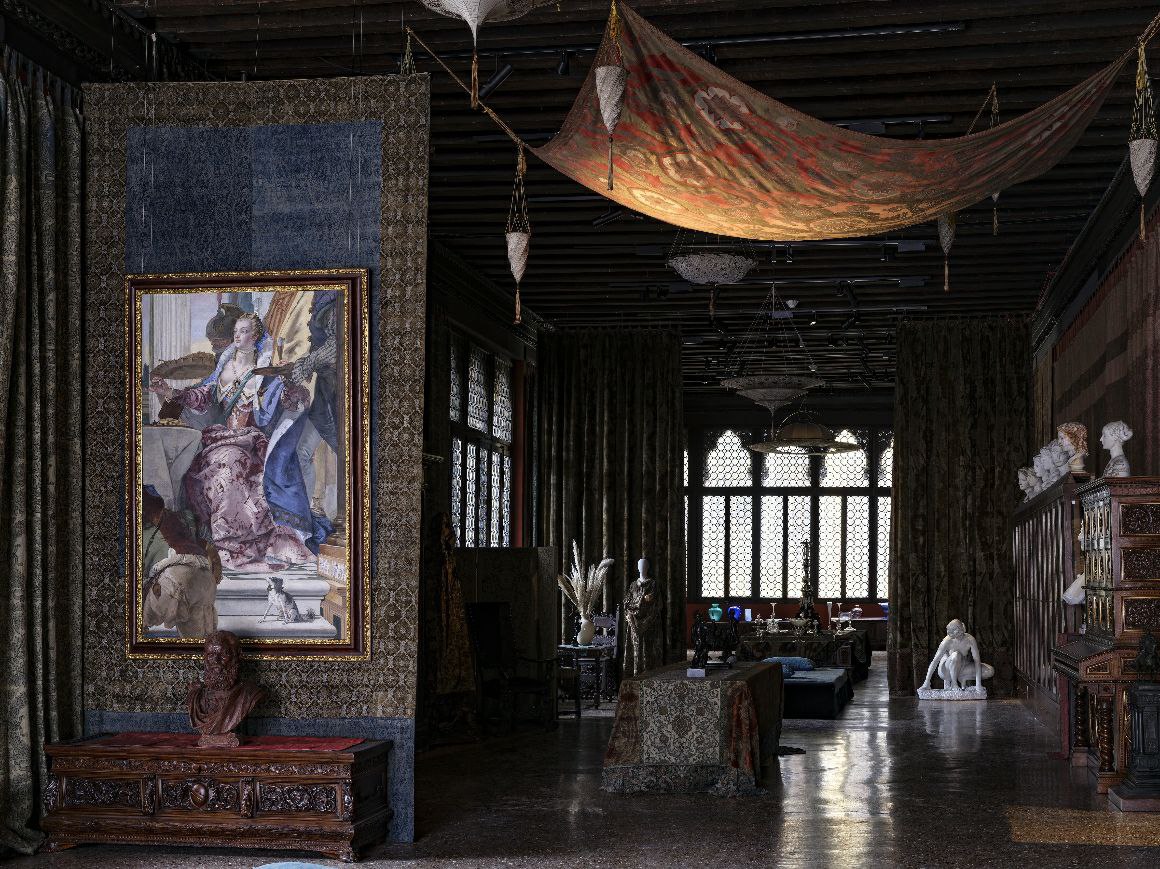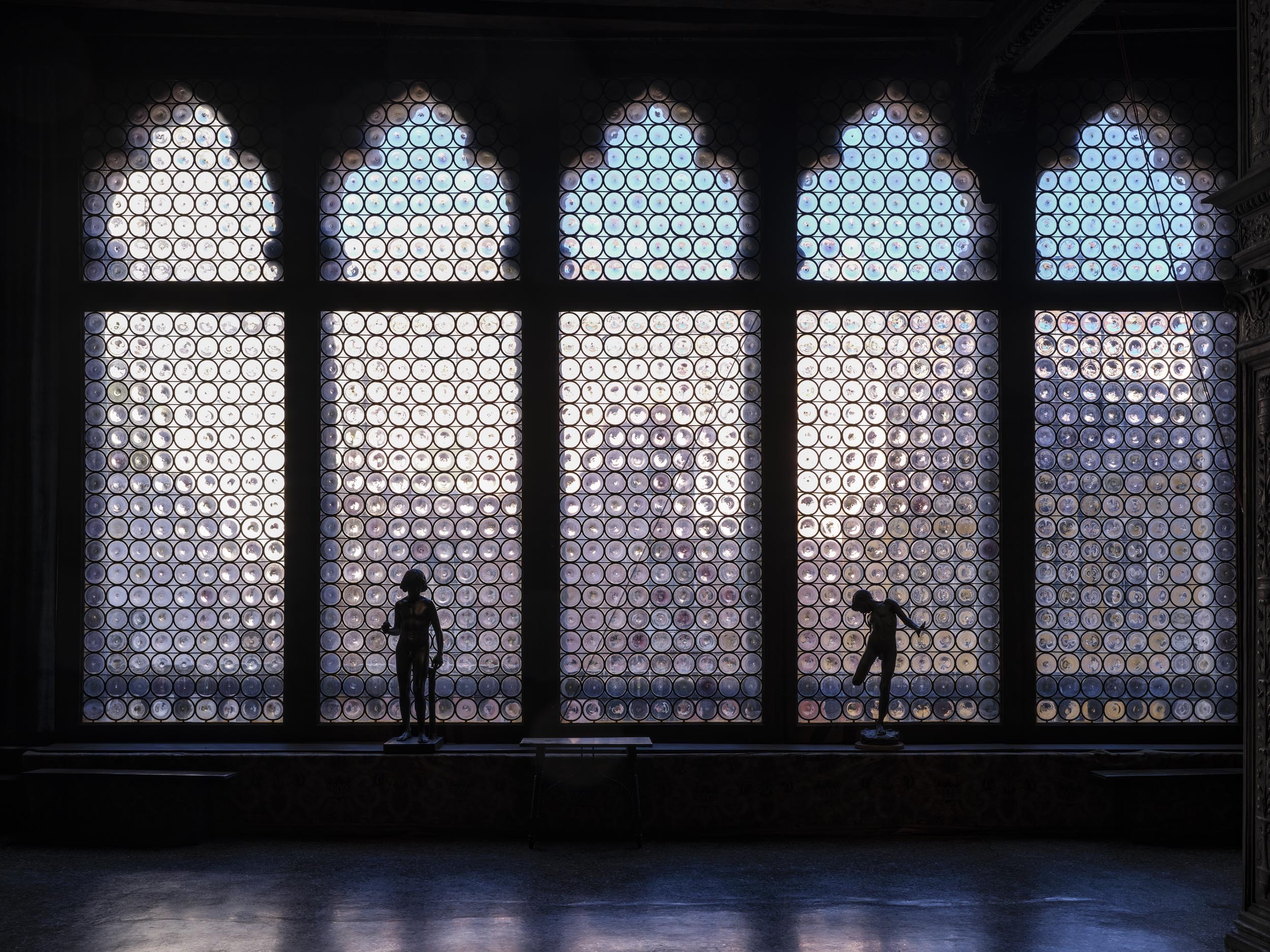
Finally Palazzo Fortuny reopens its doors after a long period of closure which was followed by a complete rethinking of the interiors and the visit route. In late October 2022 also the second floor was opened to the public, and now we are glad to delve into the world of "The Fortuny. A family history", the exhibition that wants to pay tribute to the great creations, and the creative legacy of Mariano Fortuny y Madrazo.
Palazzo Fortuny (formerly known as Palazzo Pesaro degli Orfei), permeated by an Iberian style, shows us on two floors the artist's works and how he had transformed the spaces of the building, into an extensive atelier and creative place.

^ A portrait of Mariano Fortuny y Mandrazo, via fortuny.visitmuve.it.
Above, the triple window leading to the balcony and external staircase on the courtyard.
All photos, except where otherwise stated, are by Massimo Listri - courtesy MUVE Palazzo Fortuny.
Born in Granada in 1871, raised in Paris and adopted by the city of Venice at the age of 18, Fortuny was immediately educated in art by his artist parents. During his life, in fact, he showed a great openness and interest in all practices, ranging from painting, engraving, sculpture, photography, lighting, scenography, fashion, up to printing techniques on fabrics, applied arts, creation of tempera and more. Fortuny cultivates his interests and by developing his ingenuity he comes to design various innovations. For this reason, it is defined several times as the "Leonardo Da Vinci of the twentieth century". In short, a brilliant mind that moves in the art world at 360 °. Many of his inventions have been patented but not fully revealed, such as his technique of printing on fabrics.
With particular attention to his fabrics, still in production at the centenary Fortuny factory in Giudecca, we then enter his house museum.
On the first floor we enter a large space, the walls are covered with important silk and cotton velvets, which hide an elegant detail in every corner. On one side there are rooms dedicated to fashion and collectibles while in the last one you can access his personal painting studio.

Always on the same floor, a room is dedicated to the most mature paintings and to a theatre model, with attention to detail; The whole room is imbued with a Wagnerian aesthetic.
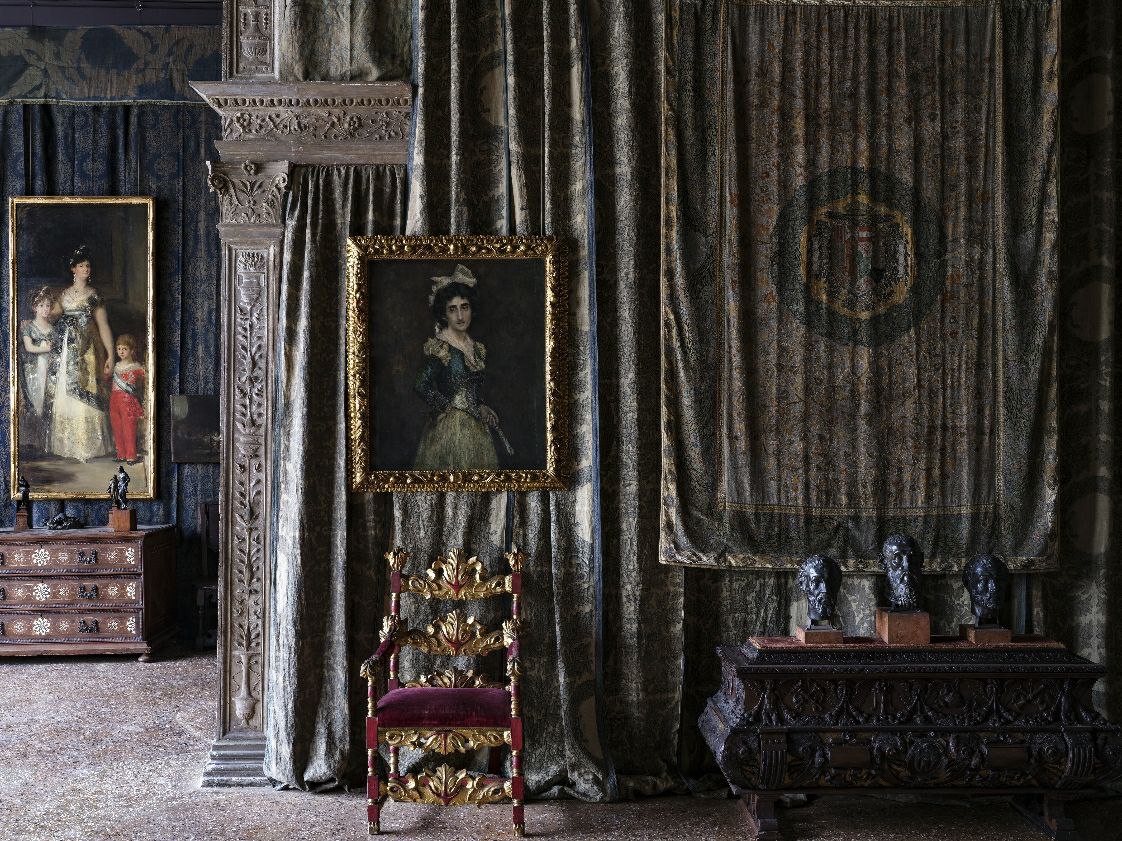
The Portego on first floor. Area dedicated to the Spanish origins.
Instead, the portego, the central part of the floor, is covered with oil paintings of all sizes, whose protagonist is almost always Henriette Nigrin, wife, muse, and Fortuny's art partner. Henriette plays a fundamental role in the life and creations of the artist, so much so that at the time of her death she decides to leave as a gift to the municipality of Venice the house museum that we now have the pleasure of visiting.
Moreover, it is thanks to an idea of Henriette that the artist manages to give life to the famous garment called Delphos: an iconic dress that has become a work of art and a great reference point in the history of fashion. Created in 1909 and inspired by the ionic chiton of the Charioteer (Greek sculpture), monochromatic and finely pleated along the entire length of the tunic, it falls elegantly to the floor. The sleeves are adjustable by silk cords decorated with Murano glass beads. It can have a stitched belt, be produced in two pieces or as a one-piece suit.
Delphos Gown and Fortuny Vintage Jacket at Queen Sofia’s Exhibition - via fortuny.com
Always remaining on the first floor, we see several of these Delphos dresses, illuminated by a warm light that sculpts the pleats, creating shadows and light effects that reflect silk. In combination with the dress, we can see the Knossos shawl that embellishes the mannequins and the whole scene. Its material and its large size immediately strike our gaze. In addition to these unique and famous pieces we can have a taste of what you will see upstairs: the printed fabrics.
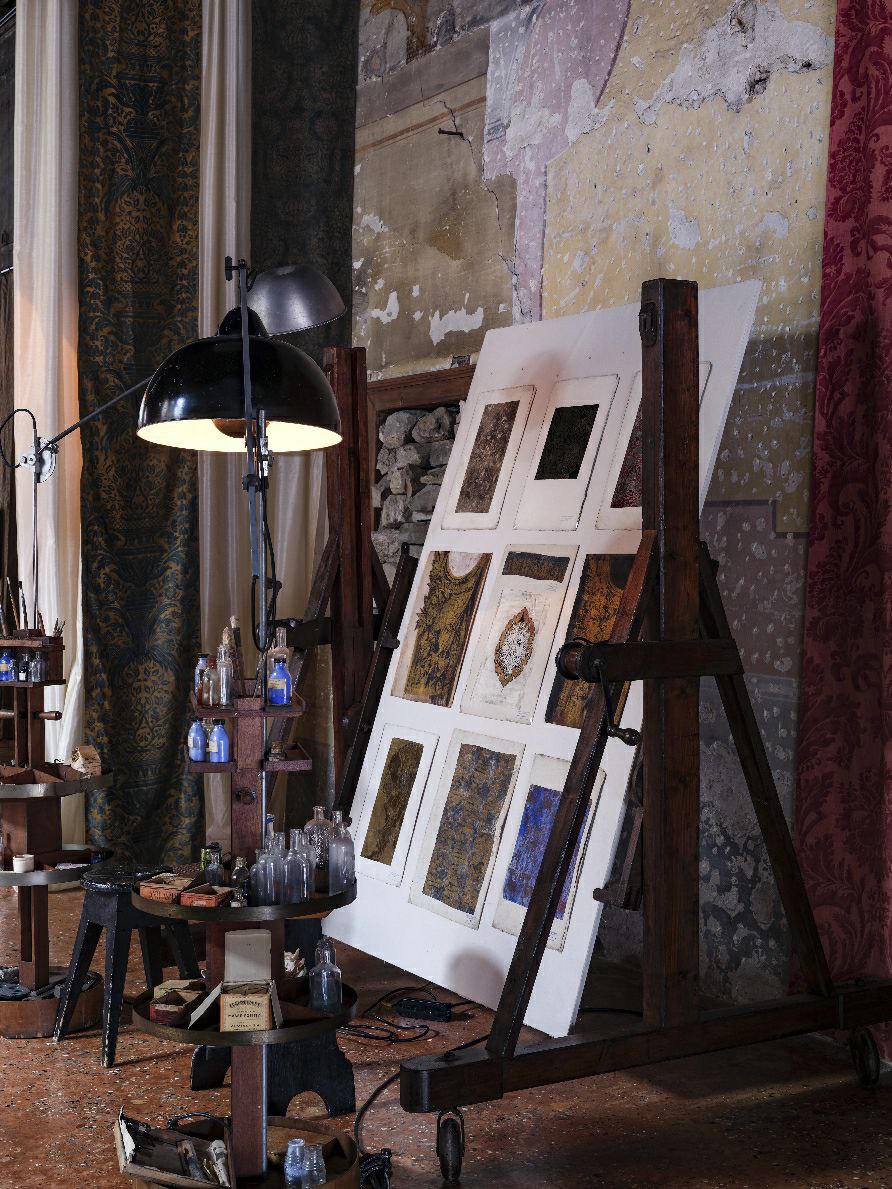
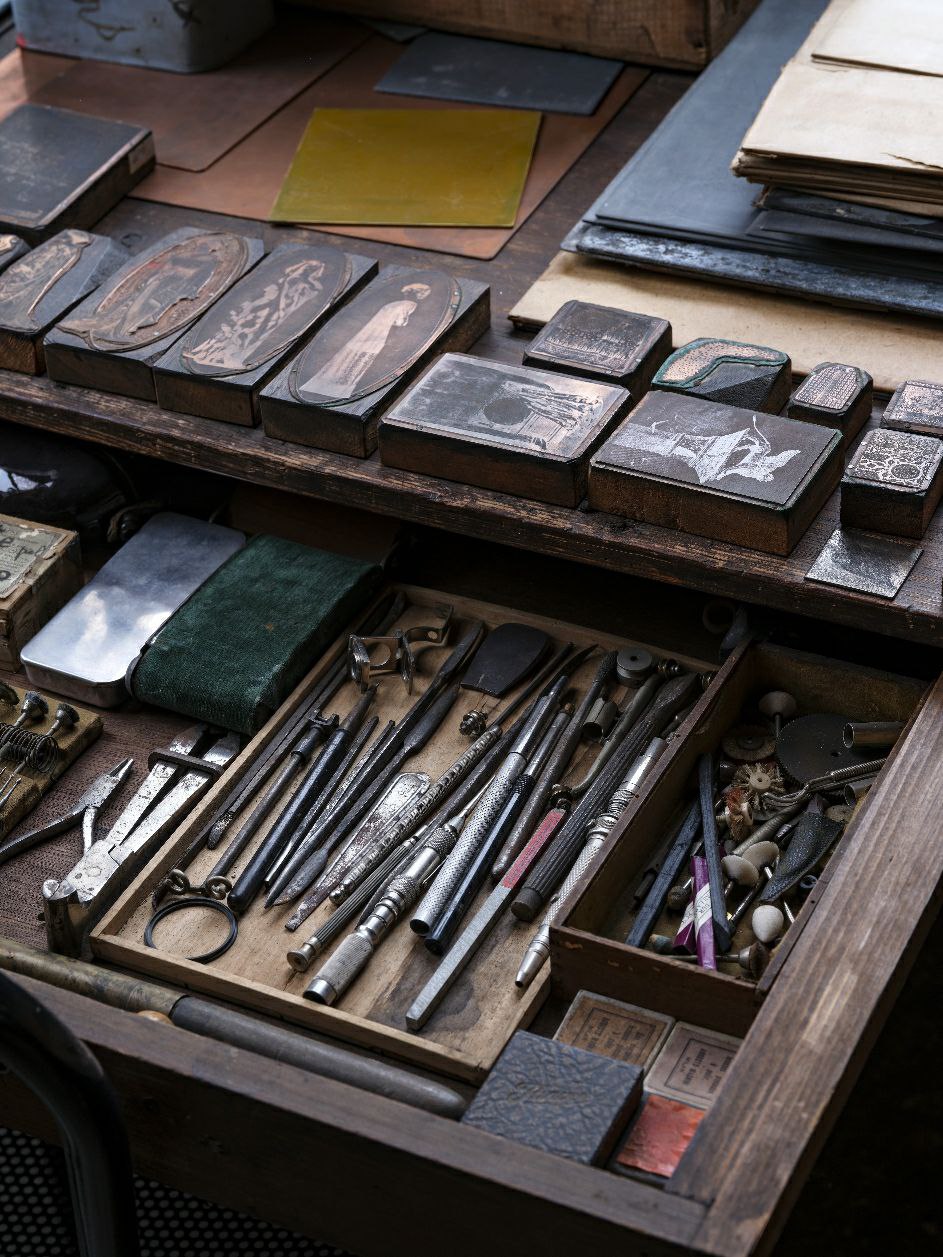
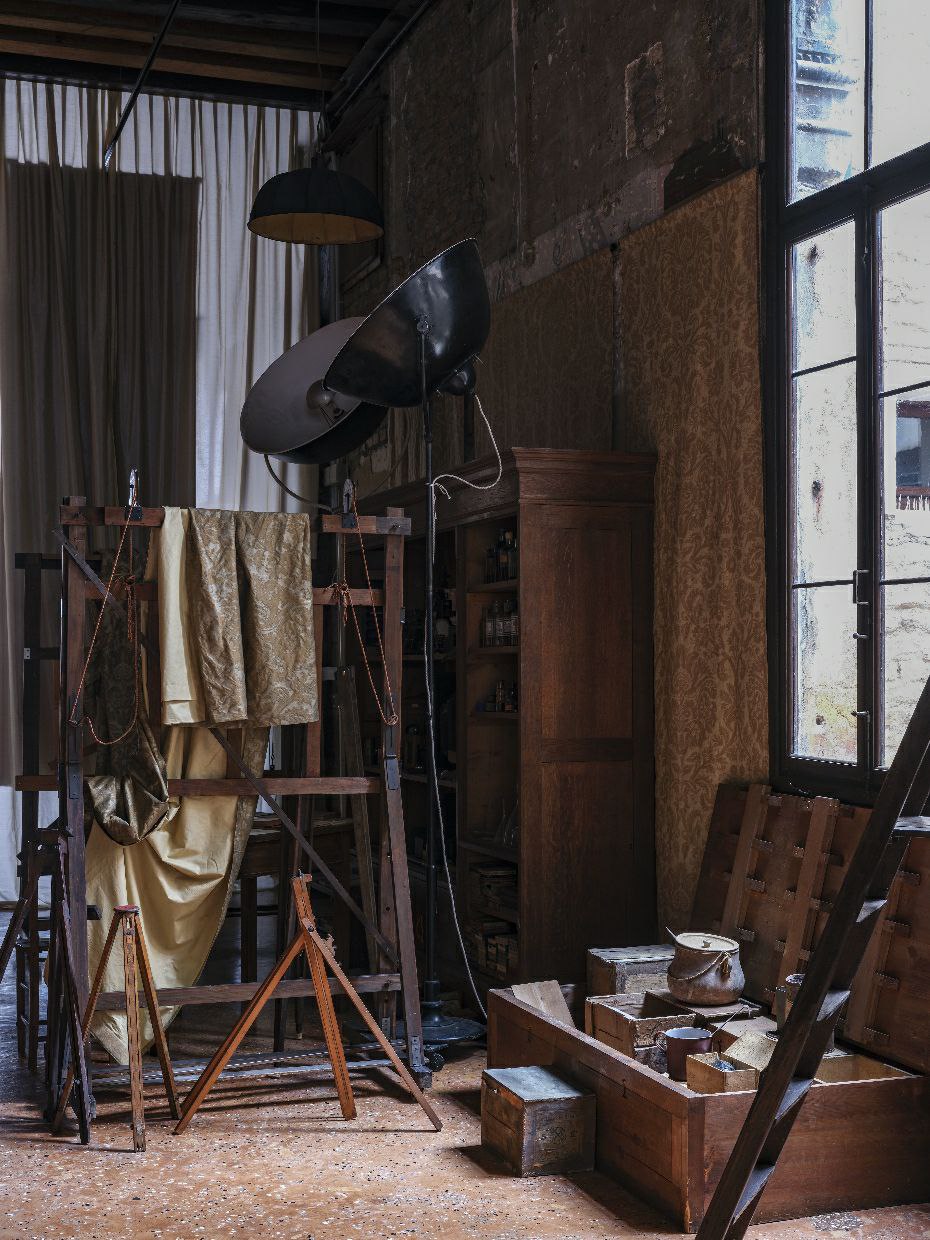
So here we are on the second floor, where the protagonists are the engravings, the studio-library, the experiments of lighting, photography, scenography and prints on fabrics.
The photographs on display represent in all respects the Fortuny style: elegant, suspended in time and space, intimate. Once again, we can see his wife Henriette framed in everyday moments, caught by Fortuny's sensitivity behind the camera.
As with fabrics, his lights and lamps, thanks to new forms of design, have been a huge success in the theatrical, scenic and domestic fields.
In our article "Timeless design. The Fortuny prop light" we have already talked about the iconic Studio 1907 lamp and Fortuny's skill in the field of light design.
In addition to clothing and interior design, Fortuny has dedicated himself to printing fabrics, creating a fast and innovative method. Starting from the ancient direct impression of wooden matrices, and then moving towards Japanese paper methods, he realizes the slowness and impracticality of these procedures, which prevented him from responding to numerous orders. He began to do several dyeing and new printing methods studies. The Fortuny factory in Giudecca and the Palazzo began to produce them in huge quantities. At first impression the rich decorations of the fabrics seem to be created by articulated weaves and warps, but instead they are very refined prints! Prints that are characterized by oriental motifs, arabesques, inspired by damasks, brocades and more.

The second floor is full of these fabrics created with the new method devised by Fortuny, obviously patented: with the help of rollers formed by silk coated with jelly, matrices, and fabric, it is printed through a rotary mechanism, a photographic impression is made and finally immersed in acids to eliminate excess materials. The timing was speeding up significantly.
Antique fabric and fabric print proofs by Mariano Fortuny on display on the second floor.
In the gallery: on the second floor, Mariano Fortuny's private library; fabrics and antique clothes from the Fortuny family's historical collection. On the fisrt floor, view of the Portego towards the rio di Ca' Michiel.


After admiring the precious fabrics, photographs and being immersed in the world of Fortuny we just have to lean out from the beautiful balcony overlooking the inner courtyard, to appreciate the ancient structure of this magnificent house museum, where works and environment form a single whole unique.
< Courtyard of Palazzo Fortuny, via fortuny.visitmuve.it




